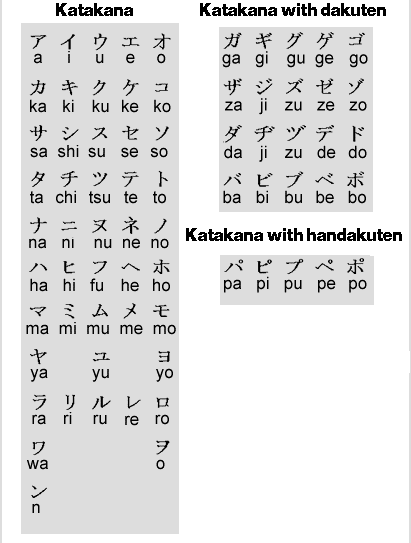
Japanese characters, called kanji, are of simpler construction than Traditional Chinese characters. Japanese mixes kanji characters with characters from two syllabaries, collectively called kana. The two forms of kana are hiragana and katakana. Hiragana is a cursive script, commonly used in Japanese text to represent ending inflections for verbs and to write native Japanese words that have no kanji equivalent, such as and, of, and to. Katakana is chiefly used to spell words borrowed from other languages. All kana symbols, except for single-vowel characters and the character n, represent a consonant followed by one of five vowels. Hiragana and katakana both represent the entire Japanese script of sounds. Hiragana and katakana are shown in Figures 7-3a and 7-3b (below).

Figure 7-3a The Japanese hiragana
syllabary. Dakuten is the symbol![]() . When added to kana with unvoiced
consonants, the consonants become voiced—for example, ka
becomes ga. Handakuten is the symbol
. When added to kana with unvoiced
consonants, the consonants become voiced—for example, ka
becomes ga. Handakuten is the symbol ![]() . When added to kana
with h or f consonants, the consonants become p—for
example, ha becomes pa.
. When added to kana
with h or f consonants, the consonants become p—for
example, ha becomes pa.

Figure 7-3b The Japanese katakana syllabary.